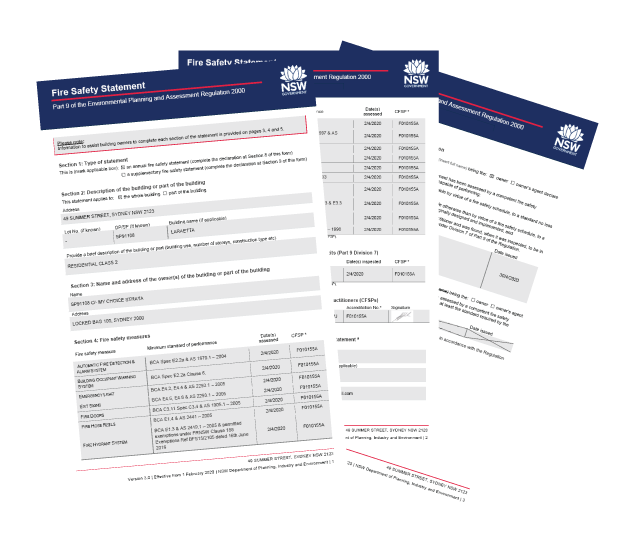Sydney’s fire safety regulations are designed to mitigate the risks associated with fire emergencies. These regulations encompass a wide range of measures, including the Annual Fire Safety Statement (AFSS). Understanding what an AFSS entails and its importance is crucial for both property owners and occupants alike.
What is an Annual Fire Safety Statement (AFSS)?
An Annual Fire Safety Statement is a document that verifies essential fire safety measures within a building or property are in place, maintained, and functioning correctly. This statement is mandated under the Environmental Planning and Assessment Regulation 2000. The document must be issued annually by the building owner or their representative.
What Does it Include?
The AFSS outlines various fire safety measures implemented within the premises. These measures typically include but are not limited to:
- Fire detection and alarm systems: This includes smoke detectors, fire alarms, and emergency warning systems.
- Firefighting equipment: Verification of the presence and functionality of fire extinguishers, hose reels, fire hydrants, and sprinkler systems.
- Emergency lighting: Ensuring adequate emergency lighting is installed and operational, aiding safe evacuation during power outages or emergencies.
- Exit signs and pathways: Verifying clear and visible exit signs and pathways for safe evacuation.
- Maintenance records: Documentation of regular maintenance and servicing of fire safety equipment conducted by certified professionals.
Why is AFSS important?
- Legal Compliance: Compliance with AFSS requirements is a legal obligation for property owners. Failure to comply can result in fines and legal consequences.
- Occupant Safety: AFSS ensures that necessary fire safety measures are in place to protect occupants in case of a fire emergency. It contributes significantly to reducing the risk of injury or loss of life.
- Property Protection: Adequate fire safety measures not only protect occupants but also safeguard the property itself from extensive damage in the event of a fire.
- Insurance Requirements: Many insurance policies require property owners to provide a valid AFSS to maintain coverage. Failure to comply may lead to insurance claims being denied in case of fire-related incidents.
How to submit your AFSS
Property owners or their authorized representatives are responsible for obtaining an AFSS. The process typically involves the following steps:
- Look for Qualified Assessors: Engage certified fire safety professionals to inspect and assess the premises for compliance with fire safety regulations.
- Conduct Inspections: Schedule regular inspections to ensure all fire safety measures are in place and functioning correctly.
- Compile Documentation: Maintain comprehensive records of inspections, maintenance activities, and any corrective actions taken to address deficiencies.
- Submit AFSS: Submit the completed AFSS to the local council or fire authorities as required by the regulations.
Bottomline
An Annual Fire Safety Statement is not just a piece of paper but a testament to a property owner’s commitment to safety and compliance with fire regulations. By ensuring that fire safety measures are adequately maintained and documented, property owners play a vital role in safeguarding lives and properties from the devastating impact of fire emergencies. Regular inspections, maintenance, and timely submission of AFSS are integral parts of this safety protocol.

Recent Comments